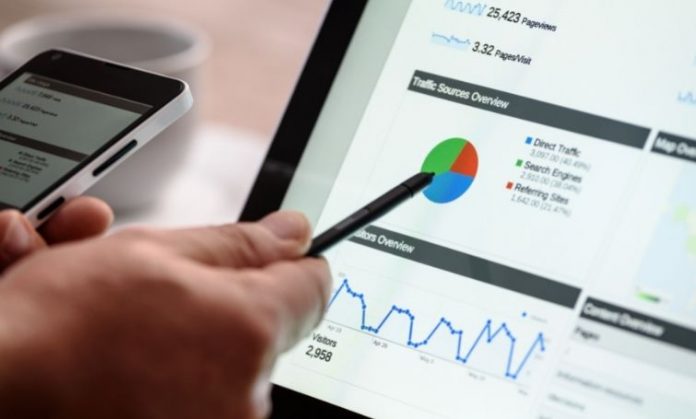If you are a small business, chances are you somewhat familiar with the idea of the ‘marketing funnel.’ Each small business has its own unique marketing challenges, which vary depending on industry, location, and budget—to name a few.
Though your small business is affected by its own individual market factors, you only stand to gain from a better understanding of this fundamental principle of marketing.
What is a Marketing Funnel?
In its most basic terms, a marketing funnel describes a potential client or customer’s path toward buying your service or product. It accounts for all stages of the buyer’s journey—from recognizing that they have a need, and weighing potential solutions, to making the final decision.
A good marketing strategy will account for all stages of the buyer’s journey. Your businesses should have content geared toward all levels of the marketing funnel, which we can divide into three sections (mainly for the sake of convenience).
Different businesses might modify their marketing funnel to match their specific needs, but for a general idea of what makes a good marketing funnel, we will only discuss the three primary levels:
Awareness, or Top of the Funnel
During this phase of the buyer’s journey, the potential customer realizes that they need something. It could be that they have a medical problem and are they are searching for possible solutions to their ailment. It could also be as simple as their car door was scratched, and they want to get the paint repaired. In some cases, they may not be able to articulate their problem fully, but they know they lack something. At this point, they start searching.
Your business needs to position itself as an authority figure that can provide insight and information about a customer’s needs as they search for solutions to their problem. If they have a problem, you want to be the one to answer it.
But, how do you establish your business as an authority figure? You’ll need to produce valuable, high-quality content that ranks on Google and gets your business in front of the right audience.
Examples of Top of the Funnel Content:
- Blog Posts
- Infographics
- Explainer Videos
- Books and e-Books
- Industry-Specific Reports
- How-To Guides
For example, let’s say you are a worker’s compensation lawyer. When someone googles, “I was denied worker’s comp,” they will get a bunch of blog posts that talk about what a person ought to do if their workers’ compensation claim was denied.
You want to appear in the search results for that query.
As a worker’s compensation lawyer, you want to have high-ranking content that addresses that problem and offers a solution—which ultimately should lead to you getting a new client. However, the potential customer is still researching their problem during this stage. If you played your cards right, they should count your business among the potential solutions, but they may not be ready to go all-in just yet.
Consideration, or Middle of the Funnel
At this point along the buyer’s journey, the potential customer can now fully articulate their problem and know what they need to do to solve it. What they now must decide at this point of the journey is who they will turn to for their solution. They will dive deeper into potential solutions as they shop around to see who is offering them the best solution.
The “best solution” is different for every customer or client. As a business owner, you have to have a general idea of your target customer and cultivate a brand for your business.
Fast, Cheap, and Good
Pick two out of the three because nothing can be fast and cheap and high-quality. What kind of service are you offering? Put another way, what kind of customer are you looking to attract? Because, during this phase of the buyer’s journey, potential customers already know they need some sort of service. What’s left is who to go with. What brand aligns with their identity and values?
Your business must know who it’s targeting. High net worth individuals? Young city-dwelling millennials? Why would a person choose your business over your competitors? Branding is important at all stages of the funnel, but it is most important during this second stage.
The types of content that effectively demonstrate brand are advertorial in nature, even if they aren’t direct advertisements. Examples of this content are:
- Interviews
- Features
- Product Reviews
- More Specific, In-Depth Blog Posts
- Advertisements: Facebook, Google, Print, Billboards
Conversion, or Bottom of the Funnel
Here at the bottom of the funnel, the potential customer (hopefully) converts into an actual customer. They’ve decided your brand aligns with their values and identity and see your solution, product, or service to be the best for their interests.
The conversion can happen in person in a sales setting—think car showroom floor or in-store sales. But, most often, sales happen on your business’s website. All your content—all the videos, blog posts, interviews, and podcasts—leads the customer along the buyer’s journey toward the landing page, where the conversion happens. Melon has free podcast hosting for professional podcasters to get your company more sales.
All your efforts should be put toward getting the potential client to the landing page.
Have You Assessed Your Marketing Funnel?
After having read this, do you feel like your marketing funnel is as effective as it can be? Are you producing content that is positioned along the buyer’s journey? What more can you do to align your business with the buyer’s journey?
Roni Davis is a writer, blogger, and legal assistant operating out of the greater Philadelphia area.



























